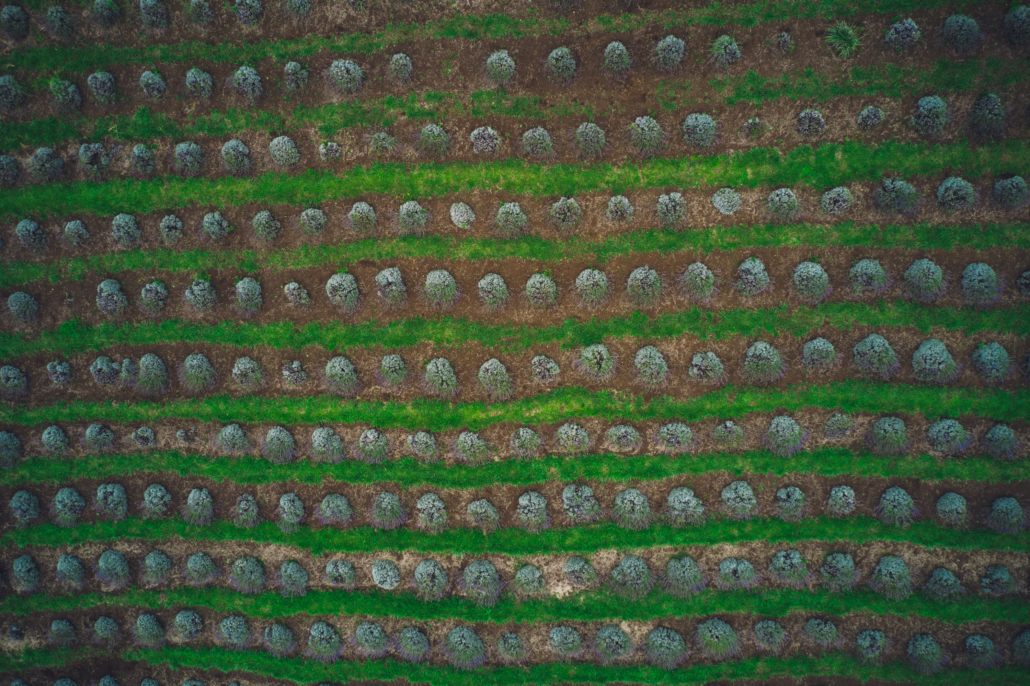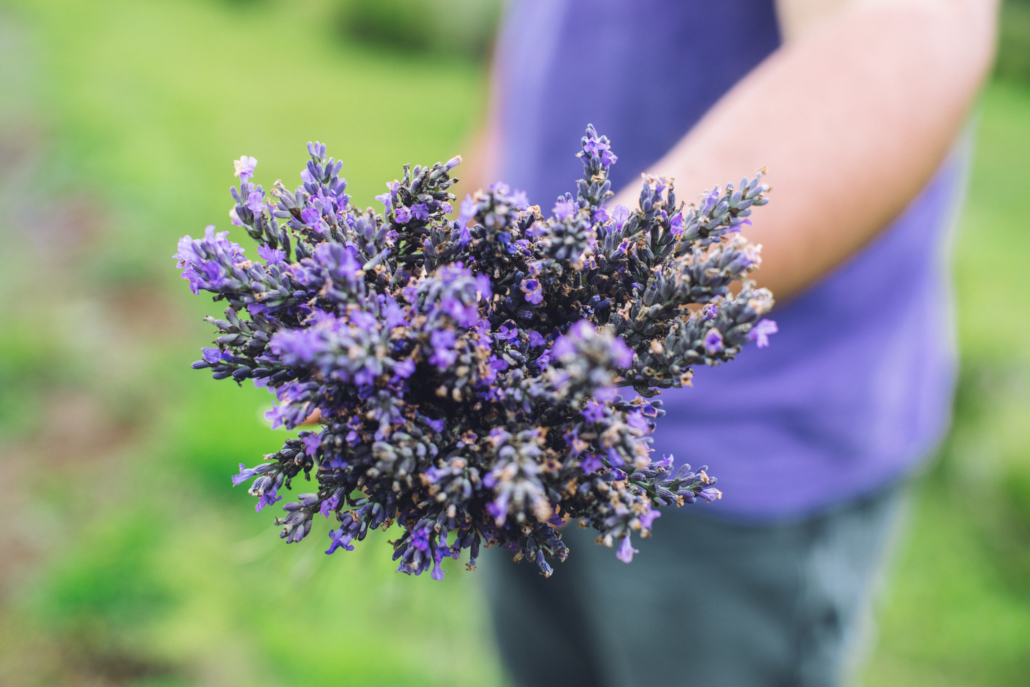Growing Lavender 101
Lavender types can roughly be categorized as English, French, or Spanish Types. English lavender varieties are a summer-only perennial bloom so they will only bloom sometime between the months of June-September and will hibernate during the winter. It has very fragrant purple flowers so it is worth the wait. We individually cut each stem when it is ready – look for at least 1/2 of the lavender head opening up its little tiny purple flowers. Cutting too young, the oil will not be developed. Cut too late when it is fully bloomed out, and a lot of the oil escapes to the wind and to the bees.

We typically make small bundles/bouquets of lavender (50 stems or so) and hang upside-down in a cool dark area to preserve the color. They will be ready when the individual lavender buds feel dry to the touch and start to fall off from the stem. Drying screens or trays would be best, so that not only will you not lose any lavender buds, but there will be less of a chance for mildewing if they are bunched together without airflow. Some folks will actually use small dehydrators on low (used for cooking) to process the lavender this way too.
(Spanish and French lavender come in many varieties and colors and will bloom year-round if you live in a temperate zone, but tend to have shorter, more delicate stems making harvesting/drying/making bouquets more difficult. The difference here being the English lavender has a 1-ft long stiff, stick-like stem which makes it hold its shape and dry more effectively than French or Spanish.)
Typically you can give a general light fertilizer quarterly, and occasionally trim/shape the plants (think “give a haircut”, a few inches or so, depending on the size and maturity of the plant). This will stimulate new growth and help it fill it more fully. We like to manicure them into a dome-shape, for you get 180 degrees of lavender and its also very pleasing when planting rows. Lavender, when left to grow wild, will take on a more spindly/leggy, hedge-like appearance. English lavender will take up to 1 year to mature enough to bloom; after September rolls around we do a final cut-back and trim. With Spanish and French blooming all the time, pruning the flowers will just stimulate more to take their place. Pull out any deadened areas and new growth will fill in the space.

Any variety should do well provided that it is not over-watered as this is a drought-tolerant plant. If you receive natural rainfall every few days then you do not need to water your lavender plants! If it doesn’t rain often, a watering of only once or twice a week is needed, only after it has dried completely out. Plant it in an area that will get a lot of sunlight, so no shade from surrounding trees.
If you get substantial rain, it would be best to plant them on a hillside or in raised mounds so that it can drain away from the roots – lavender is easily prone to root-rot if it has “wet feet” too consistently. Mixing in sand, cinder rocks, or even orchid bark will help create a loamy, good-draining soil, so it doesn’t also compact or become clay-like.



